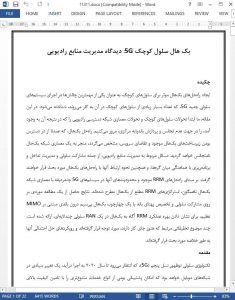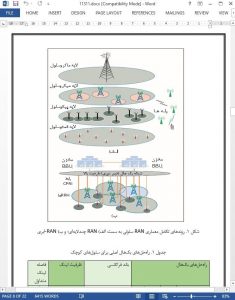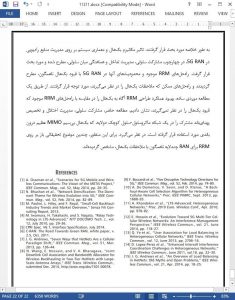Abstract
Developing efficient backhauling solutions for small cells is considered as one of the most significant challenges in the rollout of the upcoming 5G cellular systems where massive numbers of small cells will be deployed. In this article, we first review small cell evolutions and the consequent radio access network architecture evolution toward heterogeneity and centralized baseband processing. The backhaul solution, which is mainly determined by the availability of existing backhaul infrastructures and service demand, will lead to a heterogeneous backhaul network architecture. Radio resource management issues including cell association, and interference management and scheduling with inter-node coordination, as well as how they are related to backhaul solutions are discussed. Based on the existing RRM solutions and their limitations in multi-tier 5G systems with heterogeneous backhaul network architecture, backhaul- aware RRM strategies are envisioned. Results from a simple case study of joint cell association and bandwidth allocation with a massive MIMO-based in-band wireless backhauling framework are presented to demonstrate the performance gain with backhaul-aware RRM in a multi-tier cellular RAN. Several related open research issues are highlighted, and possible solution approaches are briefly discussed.
INTRODUCTION
The upcoming fifth generation (5G) cellular technology, which is expected to be rolled out by 2020, is going to be a paradigm shift of mobile networking offering native support to more diverse service types with quality of service (QoS) provisioning. Even though there is no global consensus on the definition of 5G, it is widely accepted that compared to the current cellular systems, the key performance indicators (KPIs) of 5G cellular should include 1000 times higher data traffic, 10–100 times more connections, 10 times longer battery lifetime, sub-millisecond latency, 1 Gb/s rate with mobility, and 10 Gb/s stationary access rate [1].
CONCLUSION
We have first surveyed the evolution of small cells and its impact on the RAN architecture evolution toward heterogeneity and centralized baseband processing in 5G. The backhauling system for small cell will significantly impact the RAN performance in 5G systems. Existing wired and wireless backhauling/fronthauling solutions that can be used to support 5G multi-tier RAN and C-RAN have been briefly discussed. The impact of backhauling mechanism and system architecture on the radio resource management in 5G RAN have been discussed in the context of cell association, interference management, and inter-cell coordination. Existing RRM solutions and their limitations in 5G RAN with heterogenous backhaul constraints have been discussed, and possible solutions which take backhaul considerations into account have been envisioned. We have demonstrated the performance gain of backhaul-aware RRM design when compared to existing RRM solutions ignoring the backhaul constraints through a simple case study. This study considers joint cell association, interference management, and bandwidth allocation in a two-tier macrocell-small cell network where in-band massive MIMO wireless backhaul is adopted. To this end, several open research issues on RRM for heterogeneous multi-tier RAN with backhaul considerations have been outlined.











